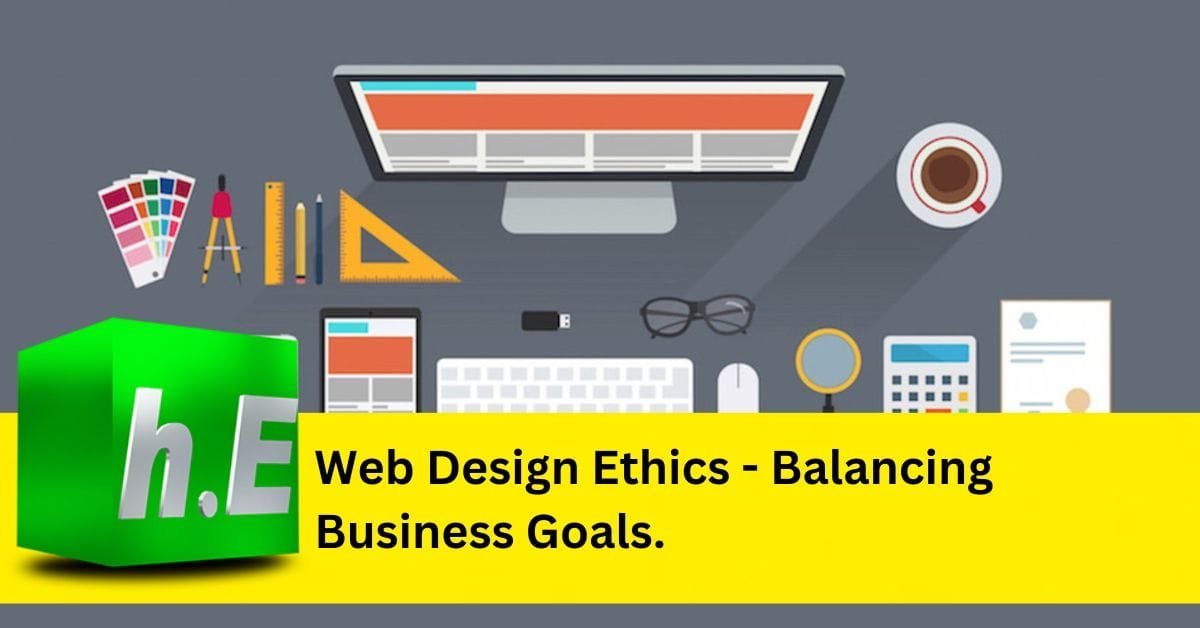Ethical Web Design: Balancing Aesthetics, Functionality, and User Trust
In the era of digital prominence, ethical web design has become vital for ensuring a trustworthy and positive online user experience, aligning with both business goals and user needs.
In the digital age, where websites serve as the virtual face of businesses and organizations, the role of web designers extends beyond aesthetics and functionality. Ethical considerations in web design have gained prominence as users’ trust and online well-being have become paramount. This article delves into the realm of web design ethics, exploring the challenges and responsibilities designers face in creating online experiences that prioritize both user satisfaction and business objectives.

User-Centered Design: The Foundation of Ethical Web Design
Ethical web design begins with a user-centered approach. It’s about placing the needs, expectations, and rights of users at the forefront of design decisions. This perspective ensures that websites not only meet business goals but also provide a positive and transparent experience for users.
- Transparency and Honesty: Ethical web design mandates clear and truthful communication. Designers should avoid deceptive practices such as hidden fees, false claims, or misleading visuals that might misguide users.
- Informed Consent: Users should have a clear understanding of how their data will be collected, used, and shared. Designers must implement informed consent mechanisms, especially regarding data privacy and cookies.
- Accessibility for All: An inclusive approach to design means creating websites that are accessible to people with disabilities. This involves adhering to web accessibility standards (WCAG) to ensure everyone can navigate and interact with the site.
- User Privacy: Designers must prioritize user data protection. Websites should employ secure data-handling practices and provide options for users to control their data-sharing preferences.
- Upholding User Privacy and Data Security Prioritizing user privacy, ethical web design involves secure data handling practices and providing users control over their data-sharing preferences.

Design for Engagement, Not Manipulation
While engagement is a key goal, ethical web design refrains from manipulating user behavior through dark patterns—deliberate design choices that nudge users into actions they might not want to take.
- Advocating for Informed User Consent: It’s crucial for users to understand how their data is used. Ethical web design includes clear consent mechanisms for data privacy and cookies, ensuring users are well-informed about their data handling.
- Empowering Users: Ethical web design is inclusive, catering to users with disabilities by adhering to web accessibility standards like WCAG. This ensures that all users can navigate and interact with websites effectively.
- Respectful Pop-Ups and Notifications: Prioritizing user privacy, ethical web design involves secure data handling practices and providing users control over their data-sharing preferences.
- Fostering Accessibility and Inclusivity: Ethical web design is inclusive, catering to users with disabilities by adhering to web accessibility standards like WCAG. This ensures that all users can navigate and interact with websites effectively.

Balancing Business Goals and User Well-Being
Web designers often face the challenge of aligning business objectives with user well-being. Striking the right balance requires an ethical approach that considers both sides.
- Content Authenticity: Authentic content builds trust. Ethical designers create content that accurately represents the brand and its offerings, avoiding exaggeration or misleading claims.
- Conversion Optimization: While optimization for conversions is essential, ethical designers focus on maintaining a fair and transparent process. This involves avoiding pressure tactics and fostering trust instead.
- Sustainability and Speed: Designers must consider the environmental impact of a website’s design, including factors such as energy consumption and load times. The ethical design promotes sustainability and speed optimization.
- Long-Term User Value: Instead of short-term gains, ethical designers focus on creating websites that provide long-term value to users. This leads to increased loyalty, return visits, and positive word-of-mouth.

Understand this –
Ethical web design transcends trends; it’s a commitment to creating responsible and meaningful online experiences. By focusing on user-centered principles, transparency, and ethical practices, web designers can create digital environments that foster trust and positive user interaction. Ethical web design not only benefits users but also enhances a brand’s reputation, contributing to a more responsible digital world.
In the ever-evolving landscape of web design, ethical considerations are paramount. Striving for ethical excellence doesn’t just benefit users; it also strengthens a brand’s reputation, fosters loyalty, and contributes to a more ethical digital ecosystem overall. As designers, we hold the power to influence the online world positively, one thoughtful design choice at a time.

